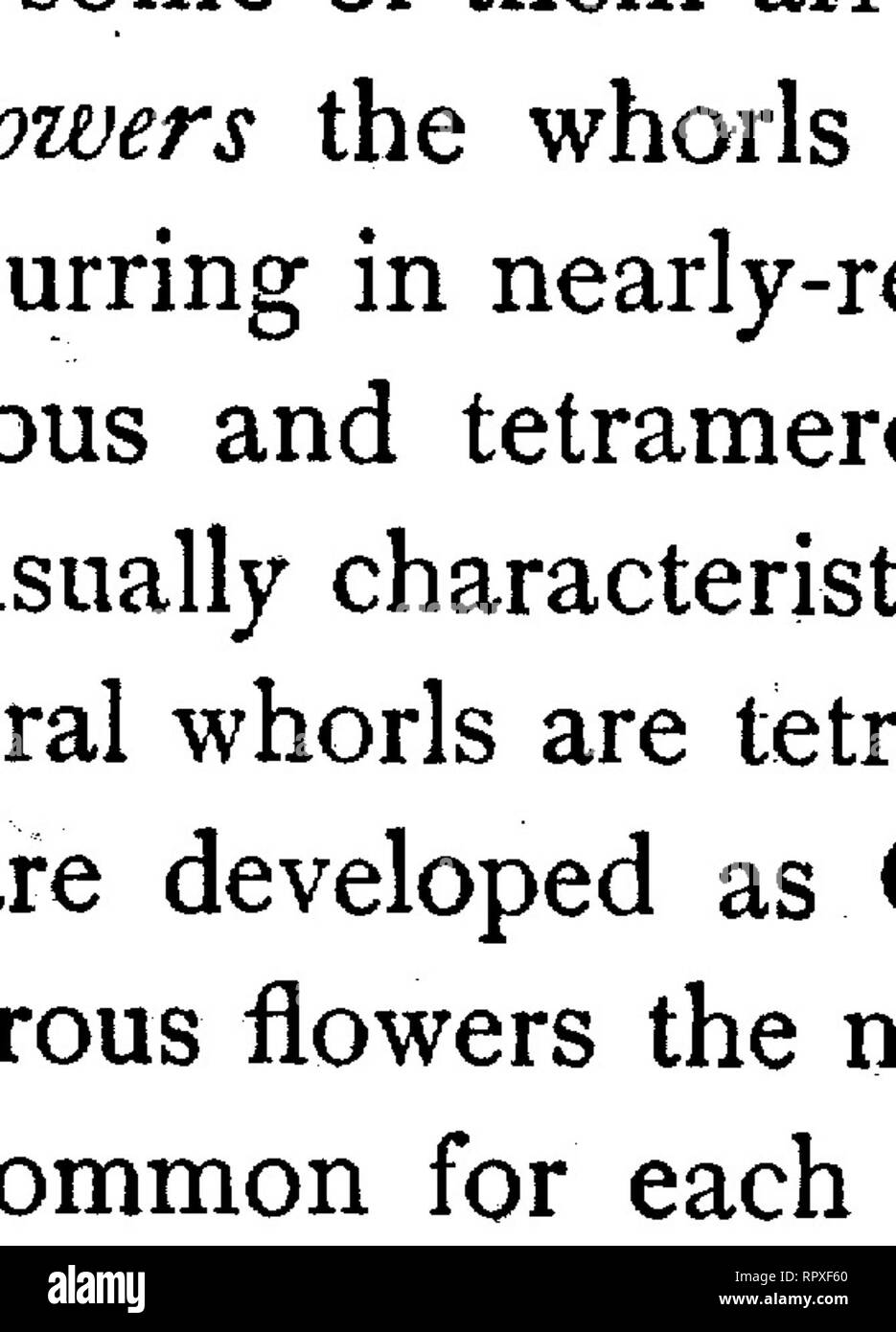. Text-book of botany, morphological and physiological. Botany. 642 PHANEROGAMS. flower is tetramerous or pentamerous the number of carpels is usually less; when the flower is dimerous or trimerous, or when the parts are arranged spirally, the number of carpels is not unfrequently larger. It will be seen from this brief outline that the relations of number and position in the parts of the flowers of Dicotyledons are very various, and cannot be referred, as is the case with Monocotyledons with but few exceptions, to a single type. Even the establishment of different types for the larger groups

Image details
Contributor:
Library Book Collection / Alamy Stock PhotoImage ID:
RPXF60File size:
7.2 MB (227.5 KB Compressed download)Releases:
Model - no | Property - noDo I need a release?Dimensions:
1341 x 1864 px | 22.7 x 31.6 cm | 8.9 x 12.4 inches | 150dpiMore information:
This image is a public domain image, which means either that copyright has expired in the image or the copyright holder has waived their copyright. Alamy charges you a fee for access to the high resolution copy of the image.
This image could have imperfections as it’s either historical or reportage.
. Text-book of botany, morphological and physiological. Botany. 642 PHANEROGAMS. flower is tetramerous or pentamerous the number of carpels is usually less; when the flower is dimerous or trimerous, or when the parts are arranged spirally, the number of carpels is not unfrequently larger. It will be seen from this brief outline that the relations of number and position in the parts of the flowers of Dicotyledons are very various, and cannot be referred, as is the case with Monocotyledons with but few exceptions, to a single type. Even the establishment of different types for the larger groups is attended with great uncertainty, since the knowledge of development necessary in order to refer par- ticular forms of flowers to general formulae is often wanting. The too universal application of the spiral theory of phyliotaxis in the case of cyclic flowers has often increased the difficulty, and has even occasioned doubts which would not have arisen without the theory. For the great majority of Dicotyledons the floral formula may be given •S'»^>n*SV«(+n+...)^, «(_TO). This formula holds good for most pentamerous flowers and for those which are truly tetramerous (or octamerous as Michauxia); so that n is in these cases 5 or 4 (or 8 as the case may be). In the andrcecium an indefinite number of (alternating) whorls S/n{+n+ } must be assumed in order to include. Please note that these images are extracted from scanned page images that may have been digitally enhanced for readability - coloration and appearance of these illustrations may not perfectly resemble the original work.. Sachs, Julius, 1832-1897; Vines, Sydney Howard, 1849-1934. ed. and tr. Oxford, Clarendon press